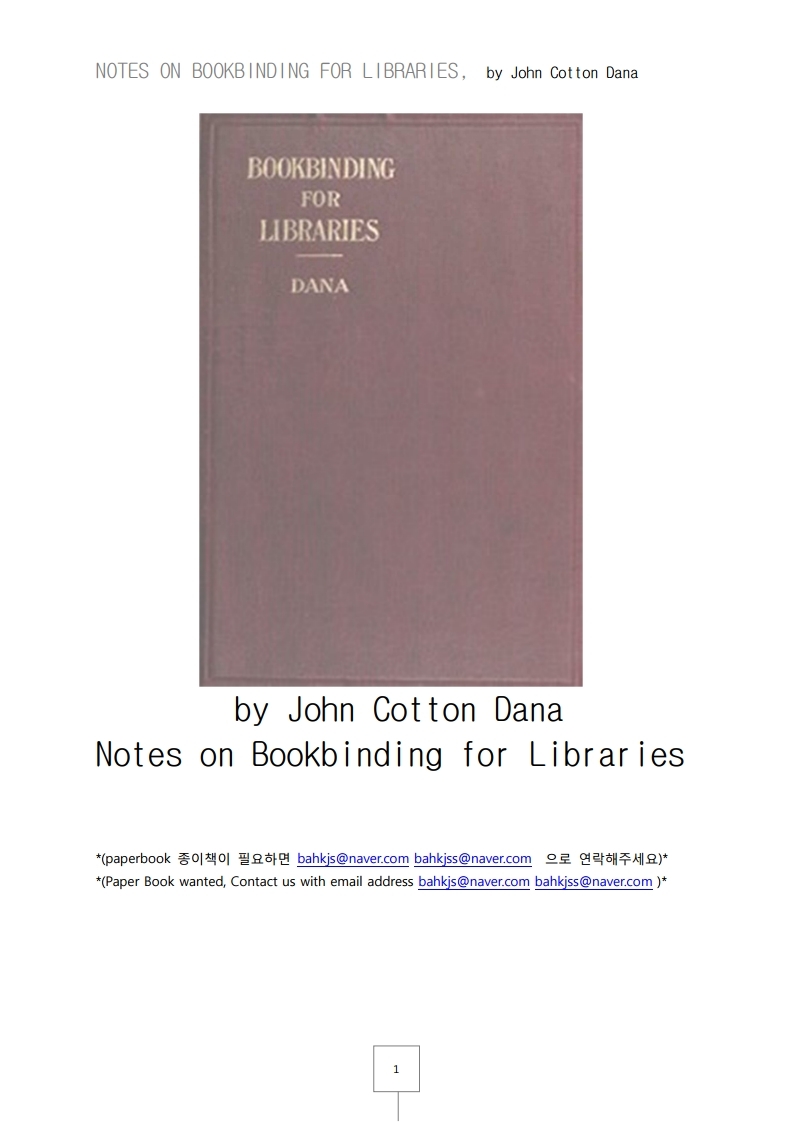인문 > 문헌정보학
Naud? On Binding
“The fourth is, to retrench & cut off all the superfluous expences, which many
prodigally and to no purpose bestow upon the binding and ornaments of their
Books, and to employ it in purchasing such as they want, that so they may not
be obnoxious to that censure of Seneca, who handsomly reproaches those,
Quibus voluminum suorum frontes maxime placent titulique; & this the rather,
that the binding is nothing but an accident & form of appearing, without which
(at least so splendid and sumptuous) Books become altogether as useful,
commode & rare; it becoming the ignorant onely to esteem a Book for its cover;
seeing it is not with Books, as it is with men, who are onely known and
respected for their robes and their clothes, so that it is a great deal better, and
more necessary, for example, to have a good quantity of Books, well &
ordinarily bound, than to have a little Chamber or Cabinet full of washed, gilded,
ruled, and enriched with all manner of nicity, lux and superfluity.”
From John Evelyn’s translation of Gabriel Naud?’s “Instructions Concerning
Erecting of a Library.” London. 1661. Chapter 5.
[11]
Preface to Second and Revised Edition
In the first edition of this book I said that it ought not to be taken as a final
authority, but as a set of suggestions which I hoped would arouse interest in
the subject of library binding and lead a few to pursue the subject further.
Some of the changes made for this edition indicate that I have followed the
topic a little further myself,―I hope with advantage to my readers.
Several chapters are new. There are many minor changes and omissions. The
lists have been enlarged and brought into one.
I had looked into the subject of library binding and discovered the ignorance
concerning it of American librarians, including myself, before I visited Mr.
Chivers’ beautiful bindery in Bath, England, several years ago. That visit had
much to do with the contents of this little book. Mr. Chivers was quite of my
opinion that the only way to induce librarians in America to improve our binding
was to persuade us to look into the subject. If the book has led some to do this
it has accomplished its purpose. As to the fundamental points in it, they largely
come, I am pleased to confess, from England, by way of that bindery in Bath.
At the risk of seeming to speak to commercial ends I quote in effect some of
the things said by[12] Mr. Chivers in one of his circulars, prefacing the
quotation with the remark that the point I wish chiefly to make in this book is the
advantage of having certain books, when new, bound once for all:
“The following statement is not an exaggeration: A library saves half the cost
of new popular books, and of replacements for which much use may be
anticipated, if it purchases them in Cedric Chivers’ patent bindings. New books
supplied in these bindings are sold as being bound once for all. It is thought
that they are so bound as to serve for quite fifty per cent. more issues than will
a book purchased in publisher’s cloth, used for a time, and then rebound in the
ordinary way. Generally speaking such results and even better results are
obtained. Occasionally, however, a book does not come up to these
expectations. In such cases it is especially desired that its failure be reported
and, if necessary, that the book be returned for examination. The paper used in
modern books is of such varying quality that it is sometimes difficult to tell
without actually trying what is the best manner of treating it.”
Buy books well bound direct from publishers’ sheets; mend ordinary books
very little; rebind them early; watch results; tabulate them, and make use of
experience. These are the main themes of this book.
J. C. D.
Free Public Library,
Newark, N. J., May, 1909





